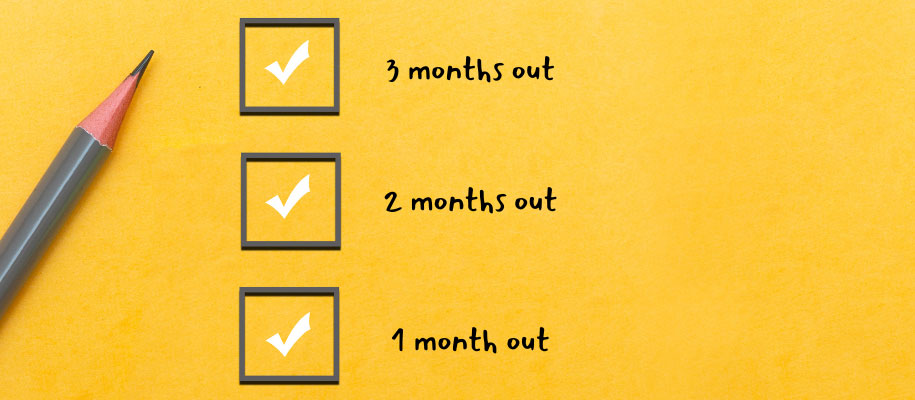Welcome to the final installment of the Graduate Admission Checklist series on what to do in the 12 months leading up to submitting your grad school application(s). This portion covers the last three months before you apply. As previously discussed, graduate school is not something to take lightly. It involves a major investment personally, intellectually, socially, emotionally, and financially. Here’s how to wrap up all the hard work and research you’ve done over the previous nine months into strong and streamlined graduate school applications.
3 months before applying
- Make sure you have current graduate application requirements and deadlines. You'll most likely access applications on the admission website. Having reviewed the information on your research spreadsheet, you should be pretty familiar with the deadlines you’ll need to meet for your applications.
- Create outlines for your essays and personal statements. Jotting down notes for each question is extremely valuable and helps ensure you answer each question fully—and that you answer the right questions for the right schools.
- If you haven't already, be sure to contact your chosen references for your letters of recommendation. If they're going to do a good job for you, they’ll need time to work on their recommendations.
- Create an application spreadsheet. Place the names of each of your options alphabetically down the left-hand column. Across the top, place the items you want to be sure you remember or compare throughout the application process. Here are a few examples:
1. The deadline by which you will apply
2. Ease of completing the application (i.e., user-friendly technology)
3. Your experience communicating with admission staff between applying and when you receive a decision
4. The admission office’s decision deadline
Related: 13 Things Admission Teams See in Great Grad School Applications
2 months before applying
- Set aside time each day to complete sections of your applications. That way, you'll get a little done each time and lessen your chances of feeling overwhelmed, rushing, and/or making mistakes.
- It may be helpful to complete the same section, with the exception of essays, for each application you're submitting. That way, you're filling in the same information and will have a sense of accomplishment. For example, completing the demographic section for each of your applications lets you move on knowing this section is done for all of them.
- Work on or complete one essay each time you work on your applications. This helps spread things out and not leave you out of time later on.
- Make sure your recommenders are ready to go with their letters/forms and confirm you've provided them with all the information they need.
- Request your undergraduate transcripts. Most universities are completely familiar with this part of the application process and have very efficient procedures in place.
1 month before applying
- Now it's time to fine-tune your applications. Thoroughly recheck your essays, then have someone else check them. Go over each of the sections to be sure you have accurately and correctly answered all questions. Check for mistakes, then have another person check for mistakes.
- Be as certain as possible your applications are exactly the way you want them to be.
- Prepare your application fees. If you’re sending a check, make sure you have the money to cover it. Bounced checks don't make a good first impression!
Pro tip: There’s a fine line between conscientiously reviewing your applications and obsessing about perfection. We're all human. Admission committees aren't looking for perfection; they're looking for proof that you as the applicant took time to prepare your materials.
Related: 4 Things to Keep Track of When Applying to Grad School
If you follow this timeline, you should be ready to submit your grad school applications well in advance of your deadlines—after all, you’ve been working on them steadily for almost a year! And the bigger buffer you can give yourself, the better, because you want to have plenty of time to follow up on your materials (whether via an online portal or by phone or email), and you’ll have time to resubmit things in the event something goes awry—heaven forbid!
Thanks for reading this series! Learn more about the author at GradSchoolRoadMap.com, and do yourself a favor by looking for scholarships to help pay for grad school right here on CollegeXpress.





